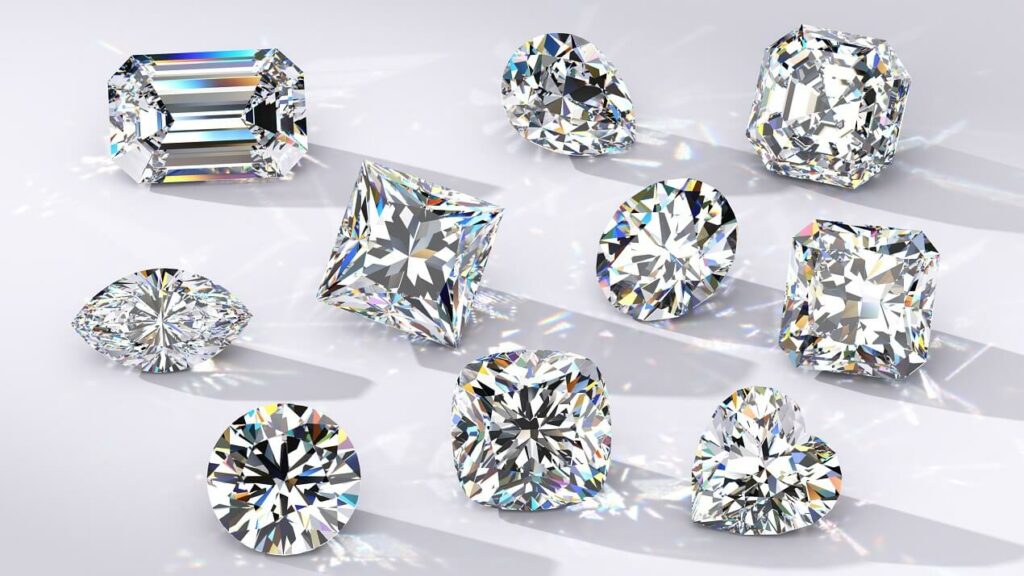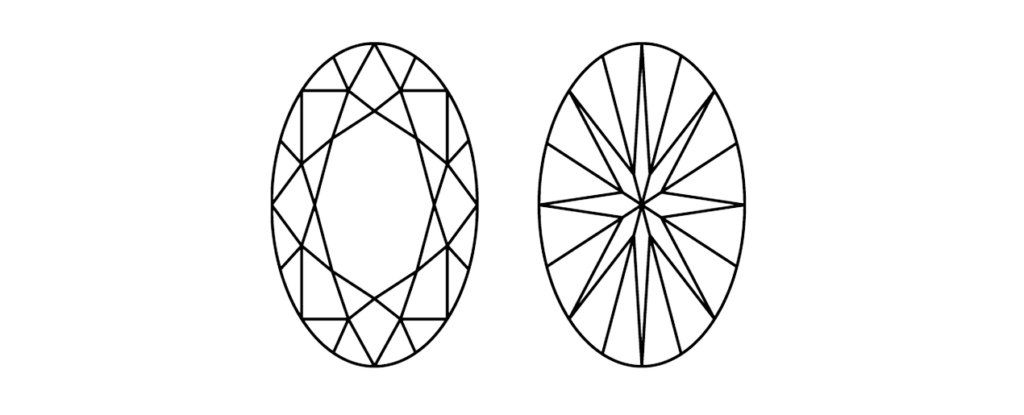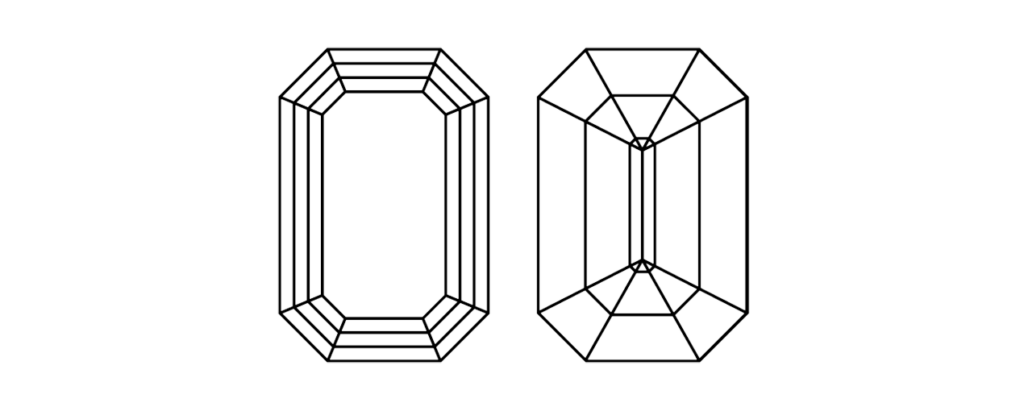FREE INTERNATIONAL DELIVERY
ETHICALLY SOURCED DIAMONDS
60 DAY RETURN POLICY
19th December 2023

Did you know that there are more than ten different diamond shapes available?
As the diamond shape will be the first thing everyone will notice on an engagement ring, finding a shape that will reflect your partner’s style, taste, and personality is essential. This guide will outline the ten main diamond shapes to give you a clearer idea about how they differ.

The Round Brilliant Cut is the most popular diamond shape as it utilises the reflection of light to maximise brightness, brilliance and fire. Round diamonds have 58 facets, or 57 if the culet (the bottom of the diamond) hasn’t been cut and remains pointed. The facets are distributed among the diamond’s crown (the top of the stone), girdle (the widest part of the stone), and pavilion (the base).

The Princess Cut is the second most popular diamond shape, and it was created after an extensive poll asking women what they wanted. A princess-cut diamond has a square shape with 57 or 58 facets giving it incredible shine. It requires a four-prong setting to protect its corners.

The Cushion Cut is the third most popular and can be traced back to the 19th century. It combines the round cut with the princess cut, giving it soft edges and a cushion-like appearance. Cushion-cut diamonds have 58 facets and come in different ratios, making them square or rectangular.

The Oval Cut was designed in the middle 1900s, and it’s essentially a lengthened version of the round brilliant cut diamond with the same number of facets and similar visual qualities. It can help make the wearer’s finger appear longer and thinner.

The Marquise Cut was designed to resemble a smile, making it a brilliant choice for an engagement ring. The stone’s elongated shape can make it appear larger than its actual size. It is best suited for a wearer with long, slim fingers. It boasts 57 facets for a mesmerising sparkle.

The Pear Cut diamond combines the oval and Marquise cuts to create a shape that resembles a teardrop. It can be worn either way, which makes it versatile. It has 58 facets, and the light reflects through the stone in a similar way to a round cut for amazing sparkle.

The Emerald Cut has 58 layered facets for symmetrical sparkle and simple elegance. It’s one of the oldest diamond cuts in the world and can be traced back to the 15th to the 16th century, but the term ‘emerald cut’ wasn’t officially used until the 1920s.

The Radiant Cut has 70 facets, making it one of the sparkliest and shiniest diamonds, hence its name. It was designed to combine the brilliance of the round cut with the elegance of the emerald cut. 1 to 1.05 ratio will produce a square-like shape, while a 1.30 to 1.50 ratio will create a rectangular shape.

The Asscher Cut has an almost octagonal outline with X-shaped facets from the centre culet to the corners. It was developed at the beginning of the 20th century. Like the round cut, it has 57 or 58 facets depending on whether the culet has been cut.

Despite its unique shape, The Heart Cut is based on the round brilliant cut and has between 56 to 58 facets. If well cut, it can have remarkable brilliance. The ideal cut ratio is between 0.90 : 1 and 1.10 : 1, making the heart wider or taller.